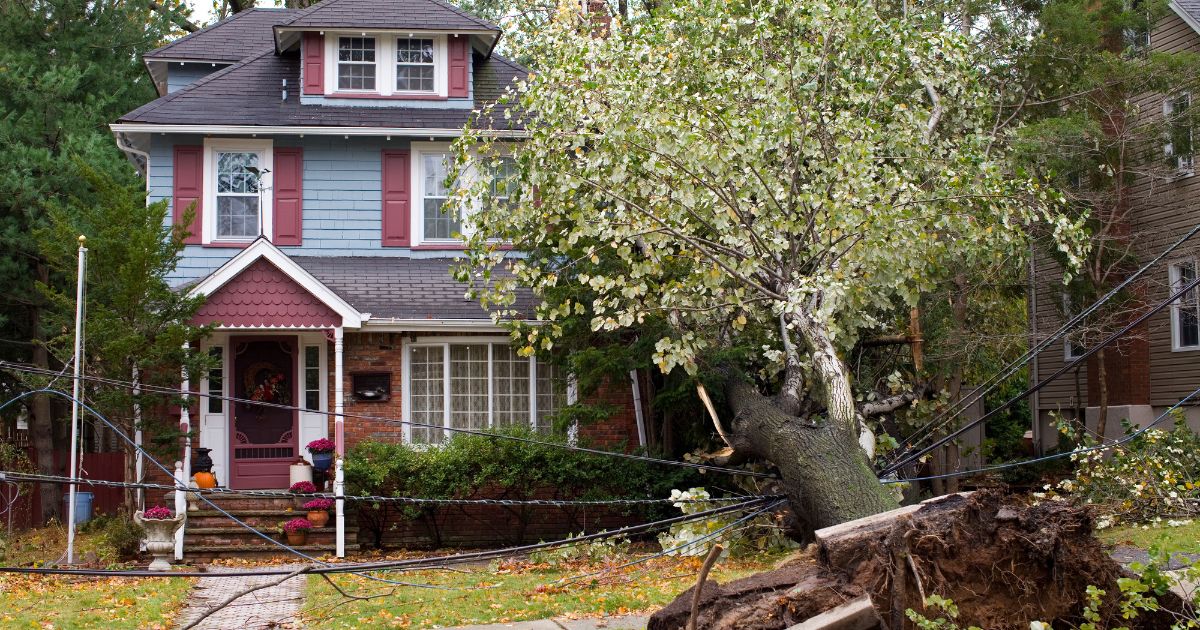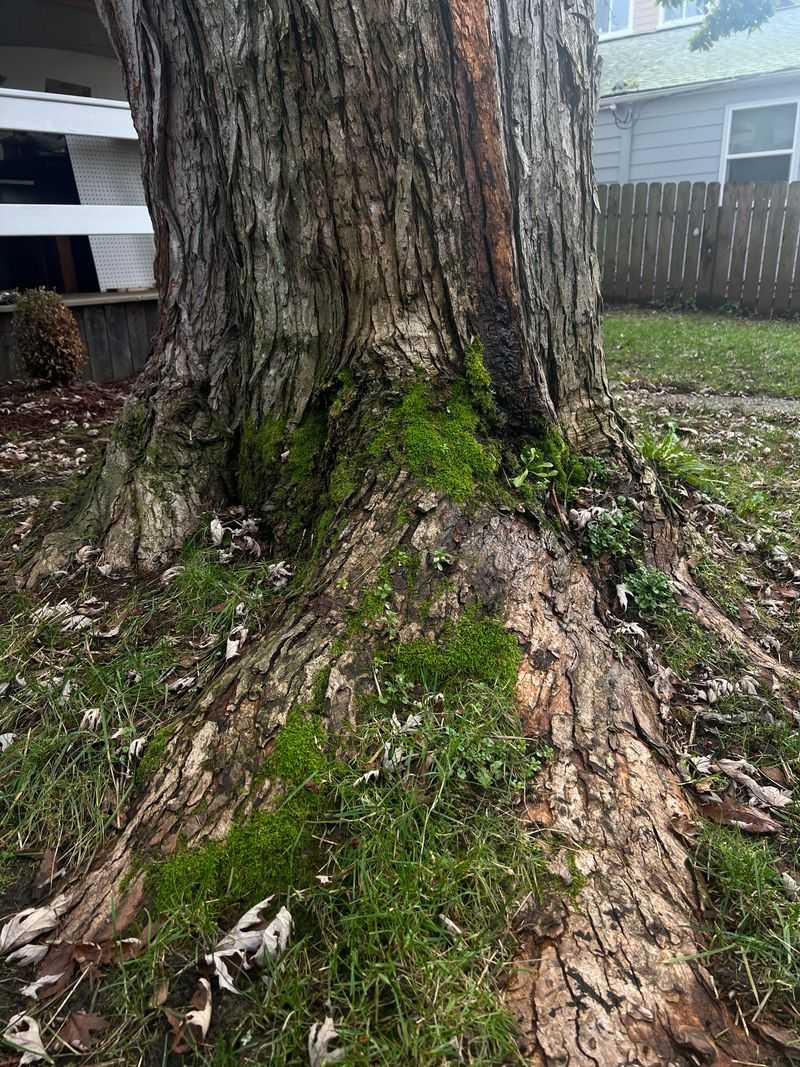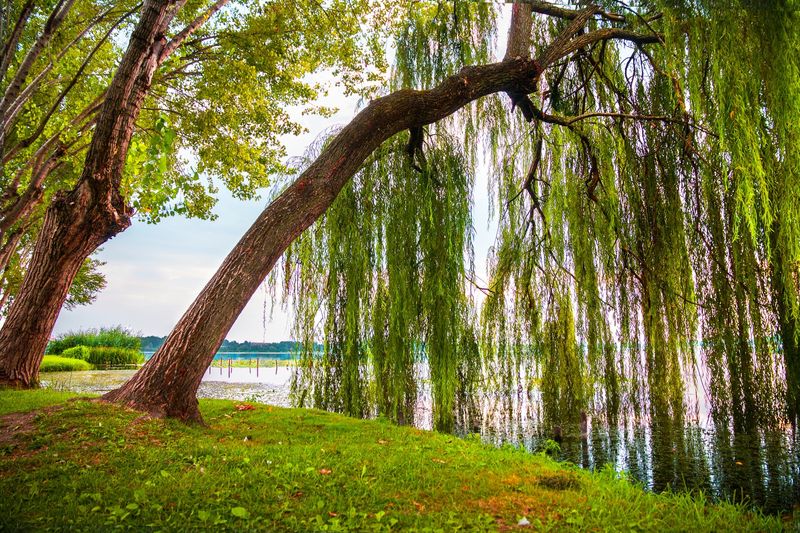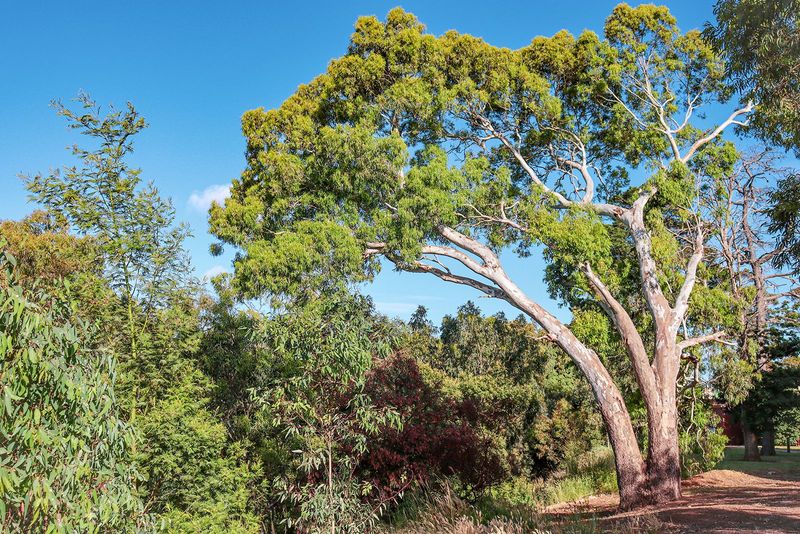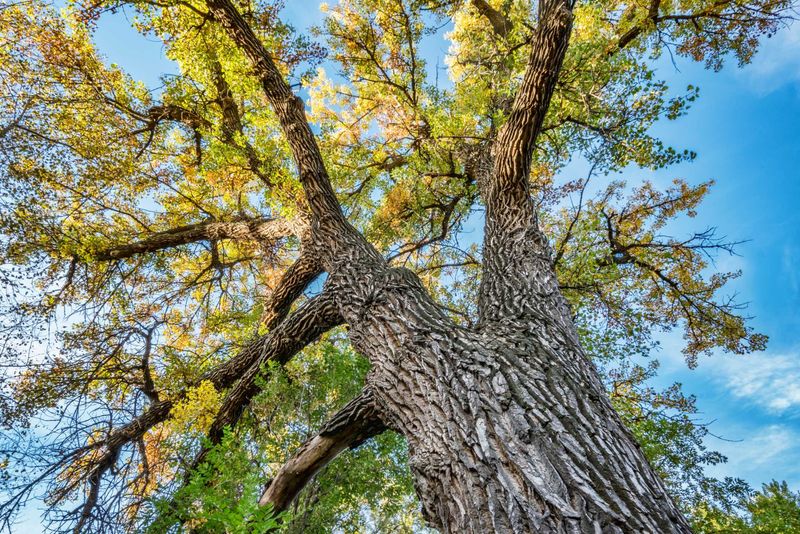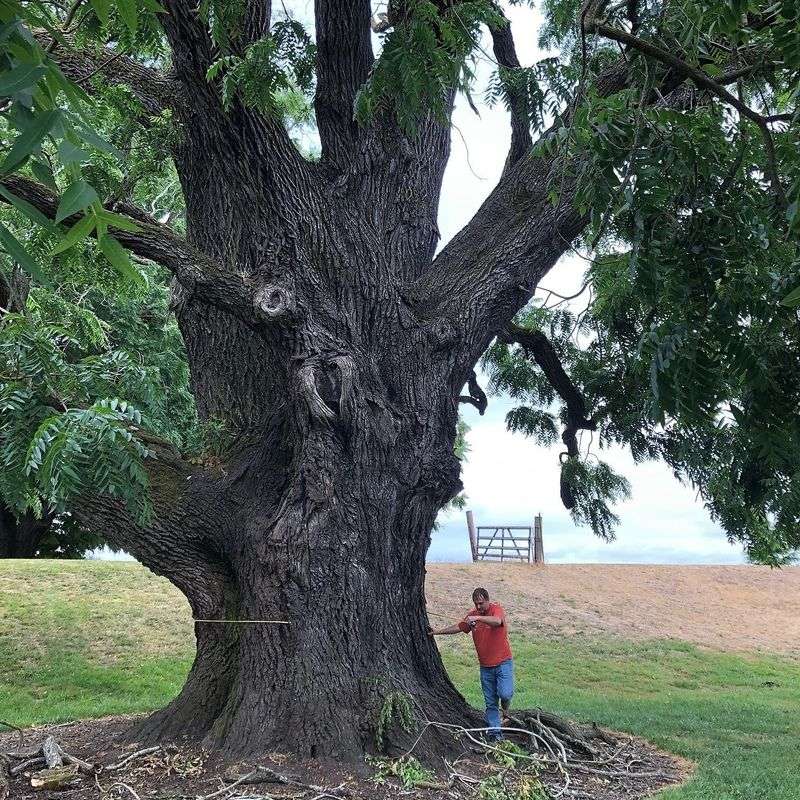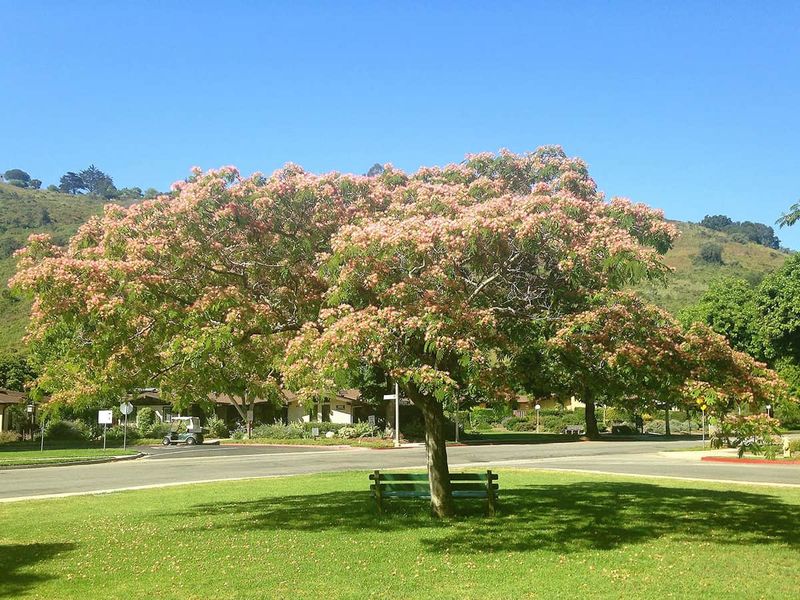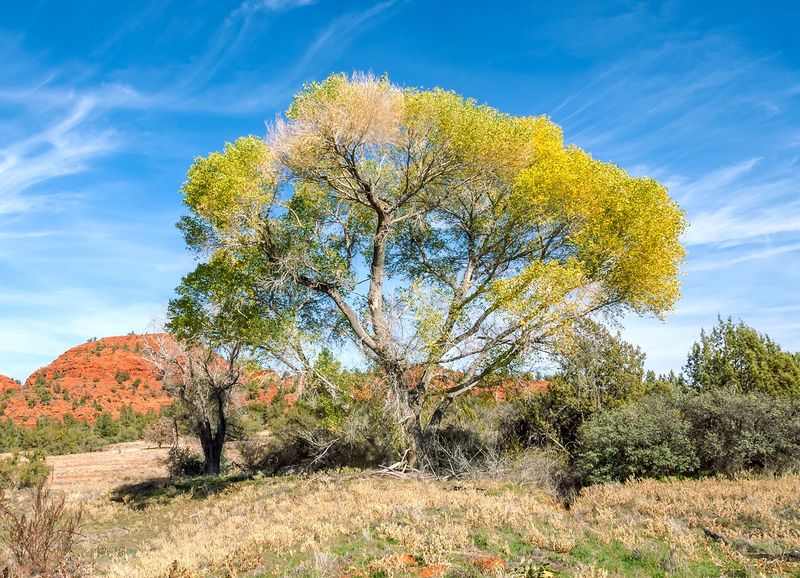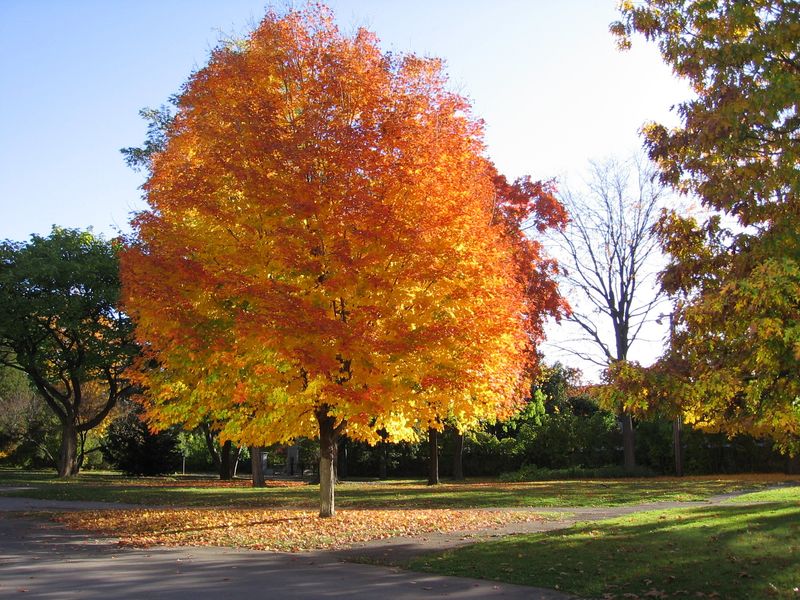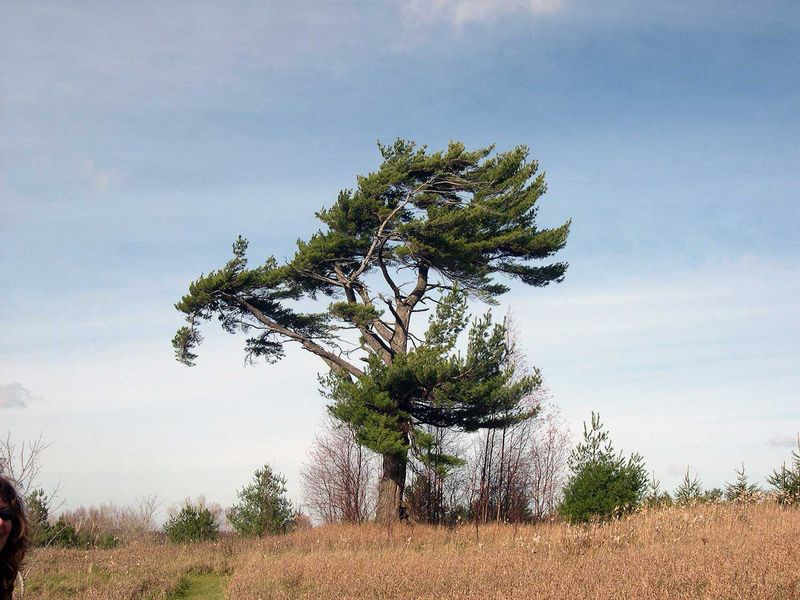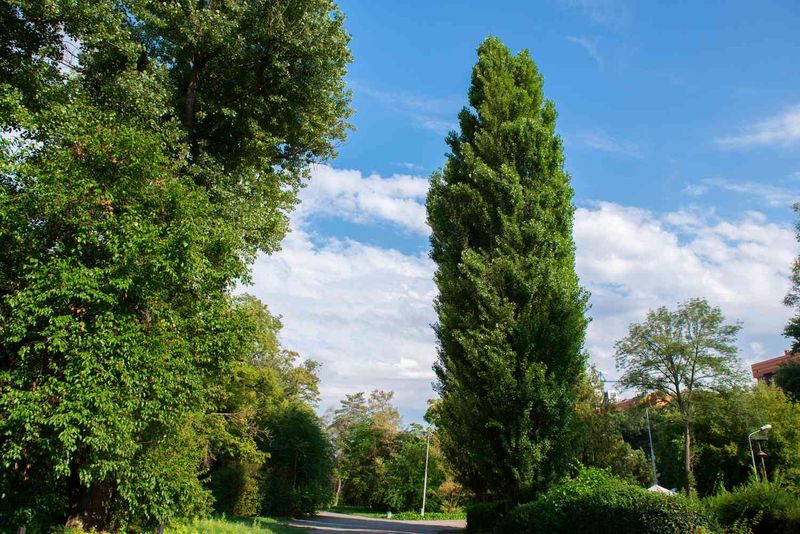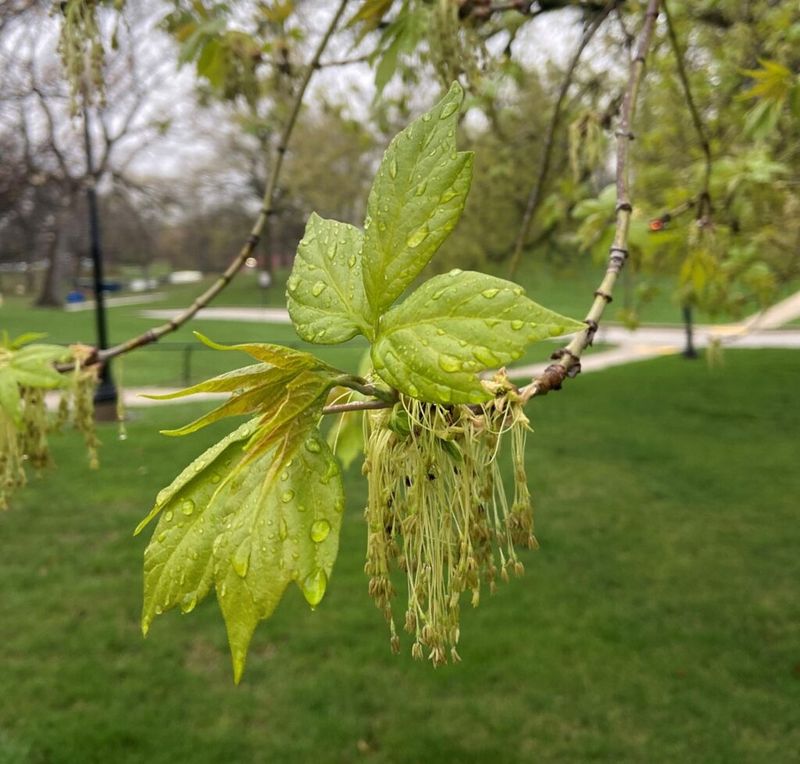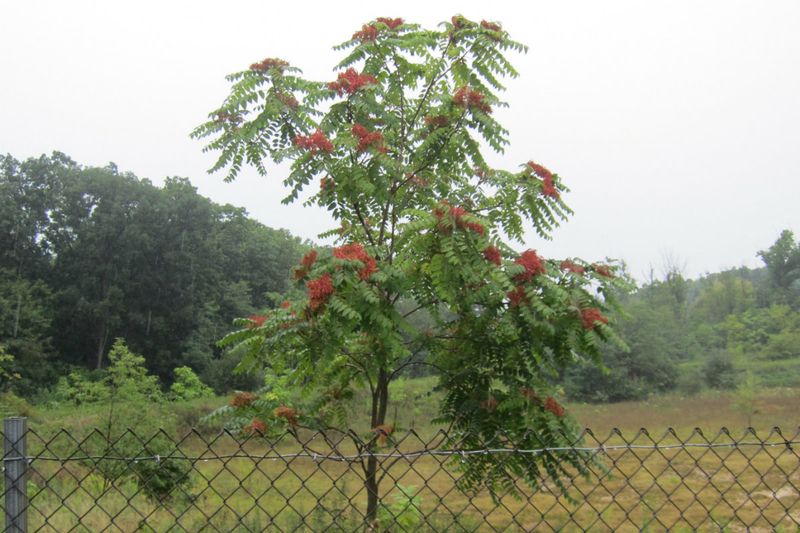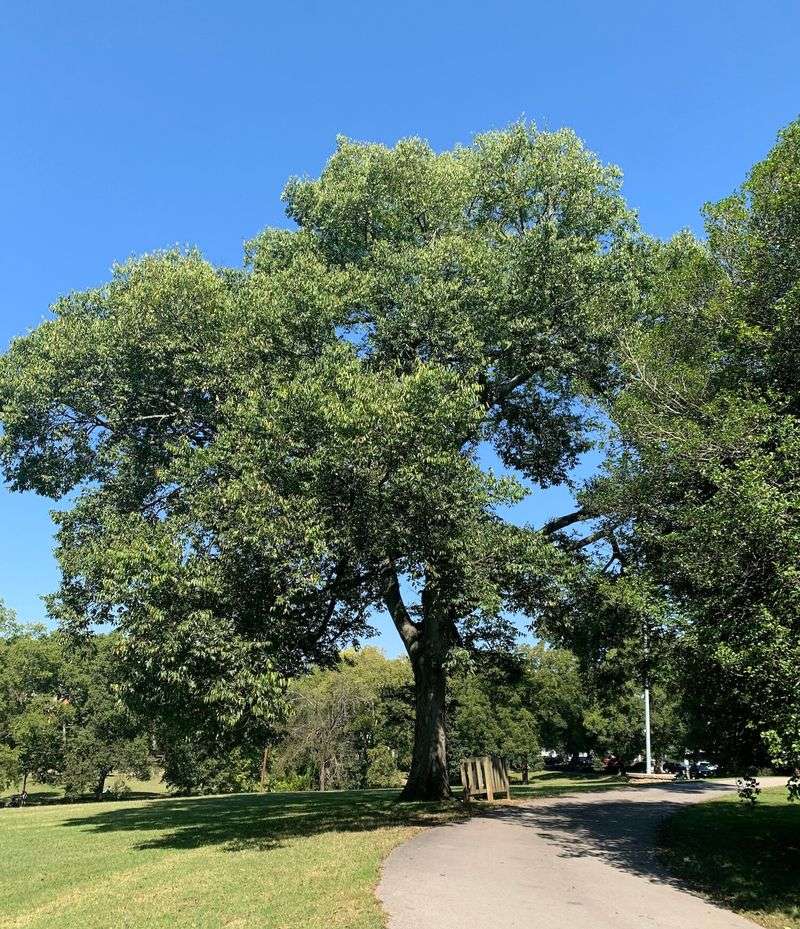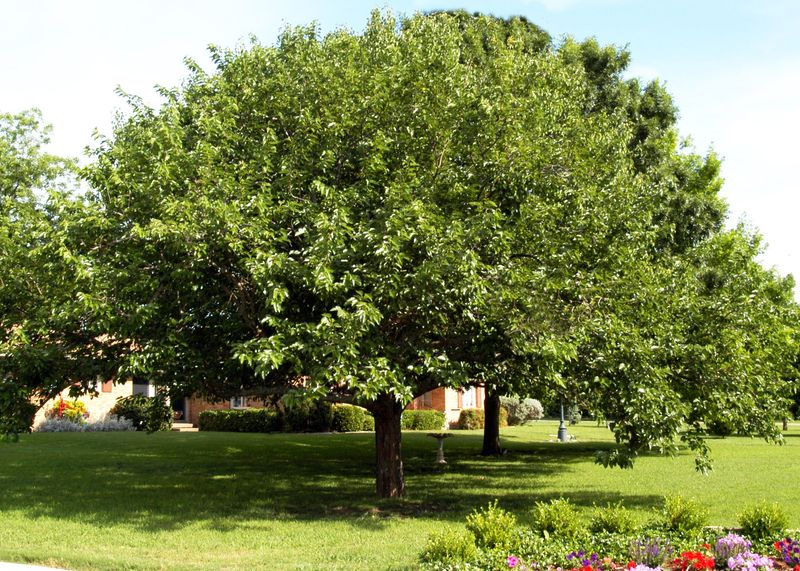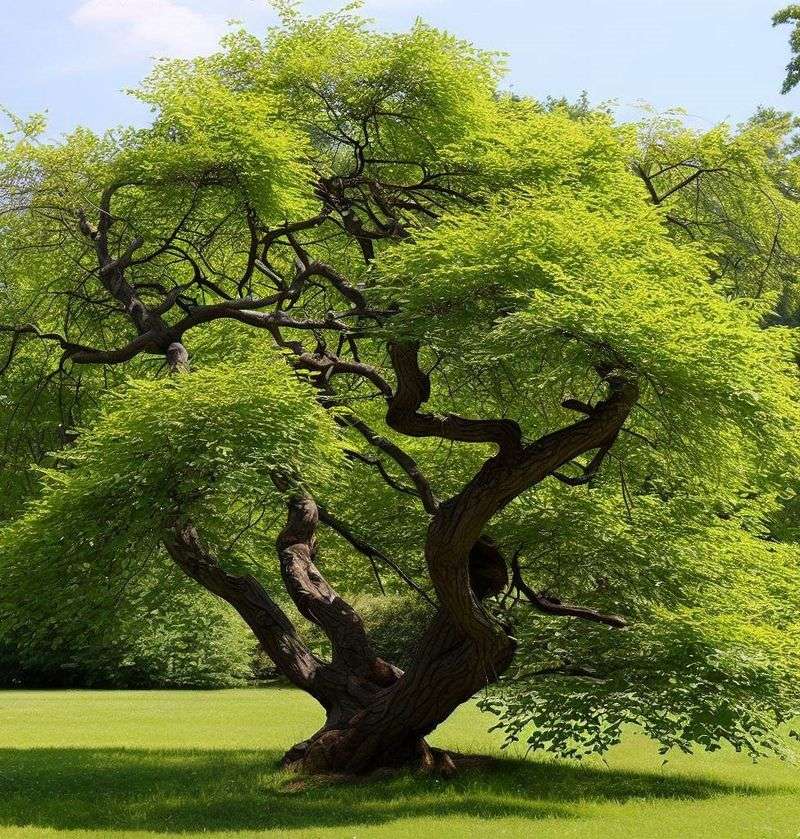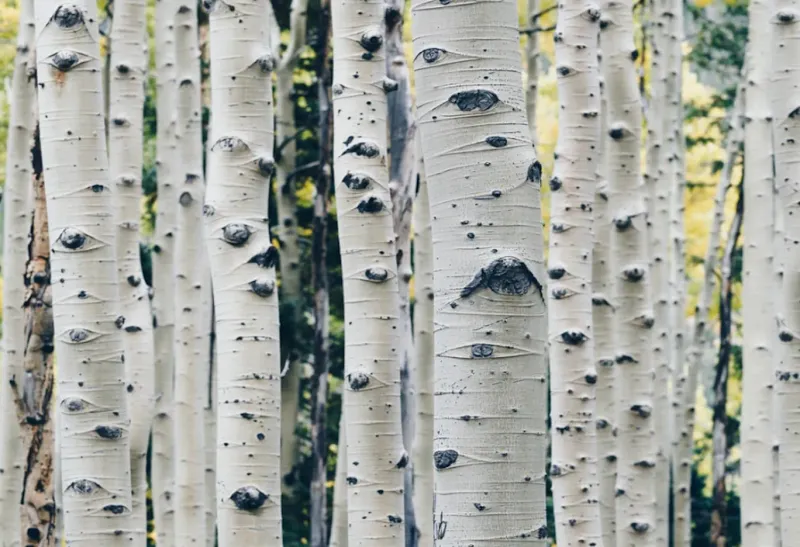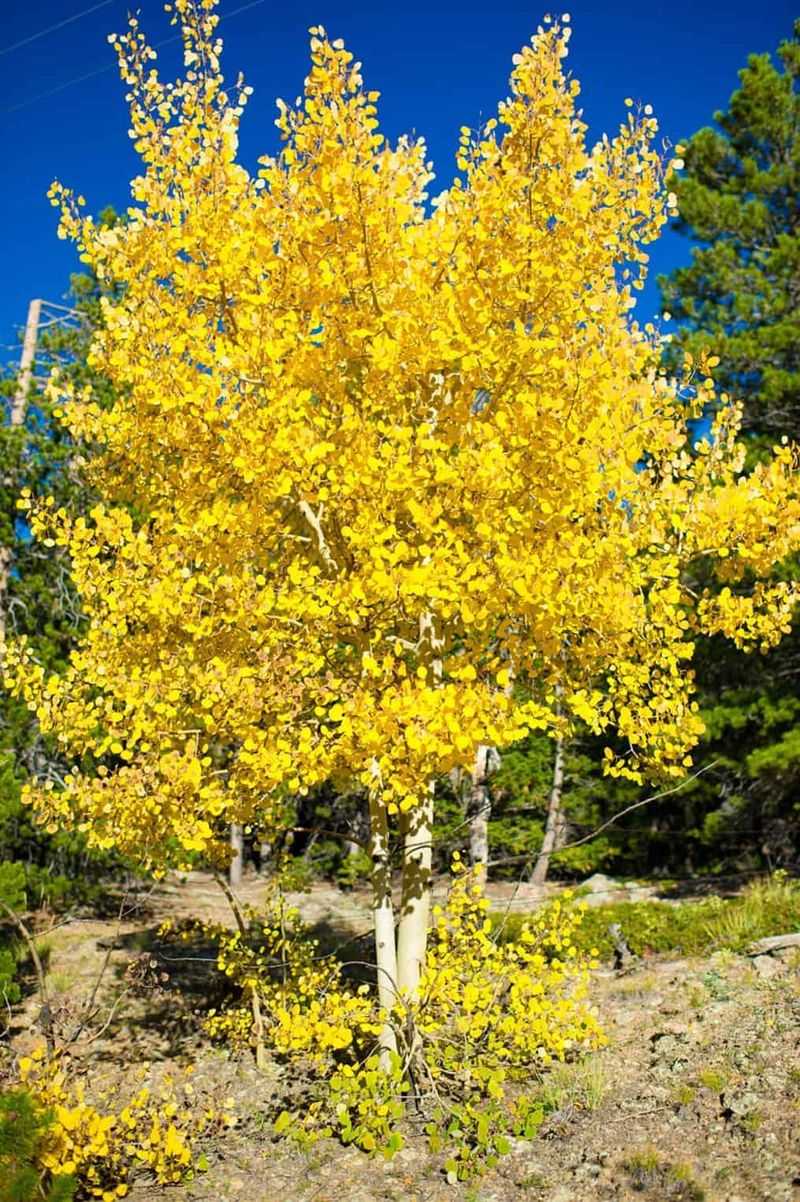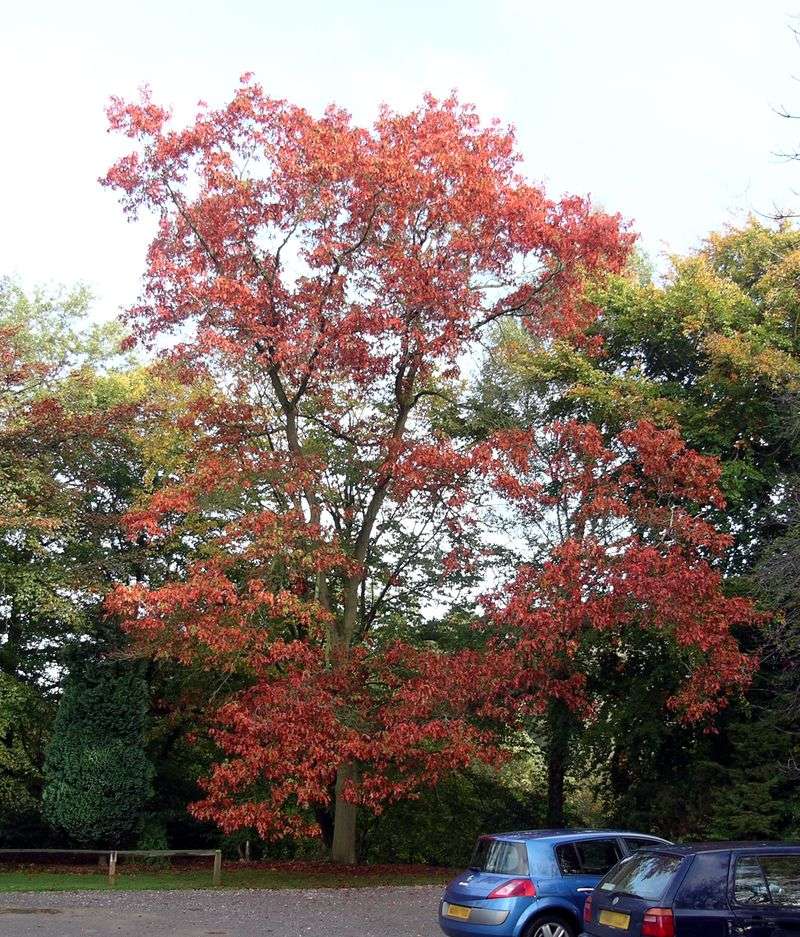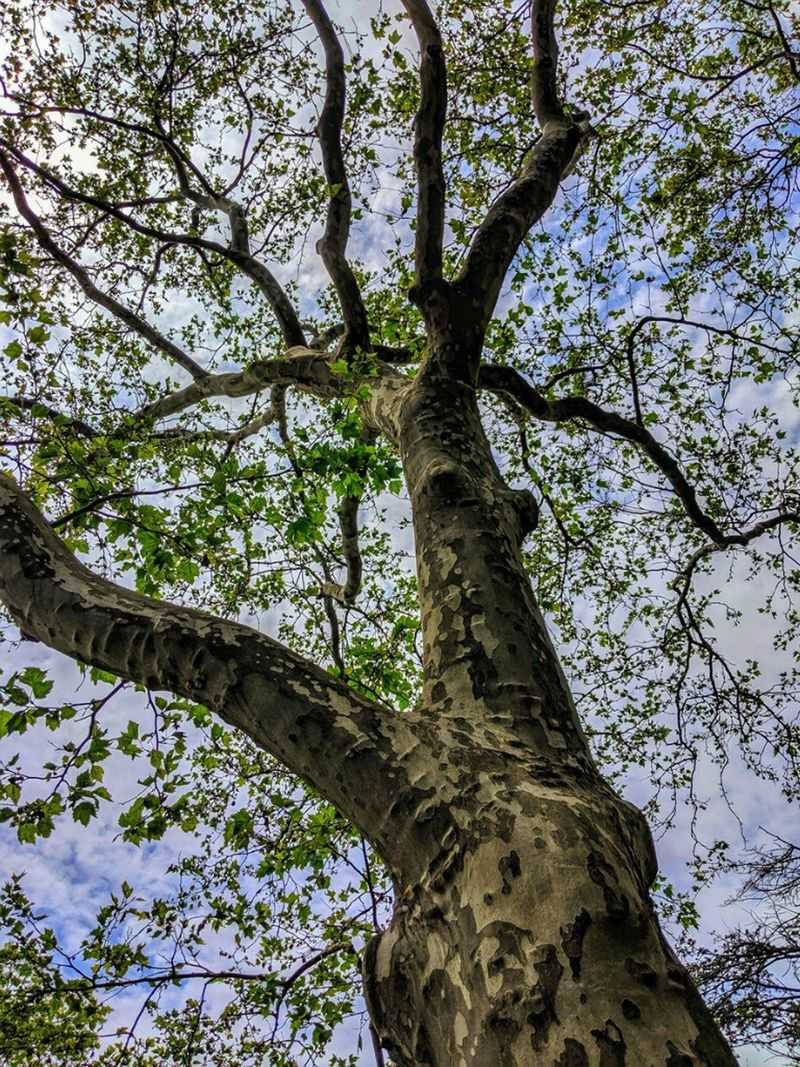Trees are beautiful additions to any landscape, but not all trees are harmless. Some species can cause significant damage to your property with their aggressive root systems, towering height, or weak branches.
Understanding which trees pose a risk can save you from future headaches and costly repairs. In this post, we’ll explore 22 trees that might be more trouble than they’re worth, each with its own unique set of challenges and quirks.
Whether you’re planting new trees or managing existing ones, this guide will help you make informed decisions about your landscape.
1. Silver Maple
Silver maples are known for their rapid growth and broad, shallow roots. These roots often invade plumbing systems and crack sidewalks.
With an impressive height, their branches are prone to breaking, especially during storms. This tree’s love for moisture means it’s often found near water sources, where its roots can cause erosion.
Despite its attractive foliage, homeowners should consider its potential for property damage. Planting these trees away from structures is advisable, or opting for a different species altogether might save future headaches.
2. Willow Tree
Willow trees are admired for their graceful, drooping branches, but they come with a hidden cost.
Their roots are incredibly invasive, seeking out water pipes and septic systems. This thirst for water can lead to structural issues if planted too close to buildings.
Additionally, their branches are relatively weak, making them susceptible to storm damage. It’s vital to plant willows at a considerable distance from your home or any infrastructure to ensure that their beauty doesn’t turn into a costly problem.
3. American Elm
The American elm is a majestic specimen, often lining streets and parks. However, its V-shaped crotches make it prone to splitting. High winds and heavy snow can easily break branches, posing risks to nearby structures and power lines.
Furthermore, its extensive root system can invade foundations and underground utilities. While its shade is welcoming, its potential for damage makes it a challenging neighbor. Regular maintenance and strategic planting locations are key to managing this tree.
4. Eucalyptus
Eucalyptus trees, native to Australia, have been introduced globally for their fast growth and distinct aroma. Yet, their high oil content makes them highly flammable. Branches are known to shed unexpectedly, creating hazards below.
The root system is aggressive, often leading to cracked pavements and disturbed soil.
While they provide quick shade and unique aesthetics, they require significant upkeep to prevent them from becoming a liability. Carefully consider their placement in your landscape to avoid potential damage.
5. Poplar Tree
Poplar trees grow quickly and tall, but their surface roots can be a nuisance. These roots often disrupt lawns, driveways, and foundations. Their wood is soft, making them vulnerable to disease and pests.
In windy conditions, branches can break off, posing dangers to nearby properties. While they are often chosen for their rapid growth and privacy screening abilities, poplars demand careful management to keep their aggressive nature in check.
Opting for regular pruning can mitigate some of the risks.
6. Black Walnut
Black walnut trees are prized for their valuable wood, but their roots secrete juglone, a chemical toxic to many other plants. This natural herbicide can kill nearby vegetation and disrupt garden plans.
Additionally, the large nuts drop with force, potentially damaging vehicles or injuring people. Their dense canopy can also shade out grass, leading to bare patches in lawns.
While they have their benefits, black walnuts require strategic placement and consideration of surrounding plant life to prevent unintentional harm.
7. Bradford Pear
Bradford pears are known for their beautiful spring blooms, but their structural weaknesses are a significant downside. The tree’s branch angles make it prone to splitting during winds and storms.
These breaks can cause unexpected damage to nearby cars or homes. While they were once popular in suburban landscapes, many have reconsidered their use due to these risks.
Regular pruning and careful placement can help manage the issues, but alternative species might offer a safer choice.
8. Mimosa Tree
Mimosa trees add a tropical touch with their feathery leaves and bright flowers. However, they are susceptible to pests and diseases, which weaken their structure. The weak wood and shallow root system mean they can topple easily in strong winds.
Their rapid spread can also lead to invasiveness, disrupting native plant life. While they offer visual appeal, mimosas demand vigilant care and strategic placement to avoid becoming a troublesome part of your landscape.
9. Cottonwood
Cottonwoods are often found near water bodies due to their need for moisture. However, their extensive root systems can pose significant risks to nearby structures, including foundations and plumbing.
The cotton-like seeds they release can be a nuisance, covering yards and clogging filters. Additionally, their brittle wood increases the chances of branches breaking during storms.
Despite their picturesque presence by water, cottonwoods require careful consideration to avoid future headaches.
10. Norway Maple
Norway maples are appreciated for their dense shade, but they come with drawbacks. Their dense canopy can prevent sunlight from reaching other plants, stunting growth. The shallow root system often disrupts sidewalks and gardens.
Moreover, their leaves create heavy shade, limiting biodiversity underneath. While they offer a lush appearance, their aggressive nature requires thoughtful management.
Choosing alternative species may help maintain a balanced and thriving garden ecosystem.
11. Sweetgum
Sweetgum trees are known for their star-shaped leaves and vibrant autumn colors. However, their spiky seed pods can be a significant nuisance, littering lawns and walkways.
These pods can cause falls and damage lawn equipment. The tree’s shallow roots can also disrupt pavements and foundations.
While their beauty is undeniable, sweetgums require diligent maintenance and strategic placement to prevent them from becoming a liability. Regular cleanup of seed pods is essential to keep outdoor spaces safe.
12. White Pine
White pines are majestic conifers, often found in forests and large landscapes. Their needles and cones can create a mess in yards, and their shallow root systems may lead to instability.
In strong winds, these trees can topple, causing damage to anything in their path. Their height also makes them susceptible to lightning strikes.
While providing excellent cover and beauty, white pines require ample space and regular monitoring to ensure they don’t become a hazard.
13. Lombardy Poplar
Lombardy poplars are popular for their tall, narrow shape, often used for privacy screens. However, their root systems can be invasive, disrupting nearby pavement and lawns.
The trees have a relatively short lifespan, and their wood is susceptible to disease, which can lead to breakage.
While they provide quick visual impact, their maintenance needs and potential for damage make them a challenging choice. Regular pruning and distance from structures can mitigate some issues.
14. Box Elder
Box elder trees are fast-growing and adaptable, but their weak wood makes them prone to breakage. Branches can fall unexpectedly, posing risks to nearby structures and people.
Additionally, their seeds are a food source for boxelder bugs, which can become a nuisance when they invade homes.
Despite their adaptability, box elders demand careful management to prevent them from becoming a liability in residential areas. Regular pruning and vigilance against pests are essential for their upkeep.
15. Tree of Heaven
The tree of heaven is notorious for its rapid growth and resilience, often thriving in urban environments. However, its aggressive root system can damage sidewalks and foundations.
The tree’s prolific seed production makes it invasive, spreading quickly and outcompeting native species. While it can grow in challenging conditions, its potential for disruption requires careful consideration.
Managing its spread and maintaining a safe distance from structures are key to preventing property damage.
16. Hackberry
Hackberry trees are hardy and adaptable, but their roots can cause problems. They often disrupt pavements, foundations, and underground utilities. The tree’s wood is relatively weak, making it susceptible to damage during storms.
While it provides shade and is tolerant of various conditions, the potential for structural damage should not be overlooked.
Consideration of planting location and regular maintenance can help mitigate these issues, ensuring the tree remains a beneficial part of the landscape.
17. Mulberry
Mulberry trees are loved for their delicious fruits, but their roots can be a nightmare. The aggressive root system can disrupt pavements, foundations, and even pool liners. Additionally, fallen berries can stain surfaces and attract unwanted wildlife.
While they offer tasty rewards, mulberries require careful placement and regular upkeep to prevent them from becoming problematic. Consider alternatives if their fruit and root issues are a concern, or ensure proper space for their growth.
18. Siberian Elm
Siberian elms are fast-growing and hardy, often found in urban and rural areas. However, their weak wood is prone to breakage, especially during storms. The tree’s seeds spread quickly, leading to potential invasiveness.
While they provide quick shade and are resilient to various conditions, their structural weaknesses require regular maintenance. Planting them away from structures and power lines can help reduce the risks associated with their growth.
19. Birch
Birch trees are admired for their graceful appearance and distinctive bark. However, their roots are shallow and invasive, often causing problems with nearby pavements and structures.
The tree’s branches can be weak, particularly in older specimens, leading to breakage during storms. While birches enhance landscapes with beauty, their placement requires careful consideration to avoid potential damage.
Opting for regular pruning and strategic location can help maintain their presence in a safe manner.
20. Aspen
Aspen trees are known for their striking autumn colors and ability to thrive in various climates. However, their root systems are invasive, often creating sprouts that can overtake a garden.
This aggressive spread can disrupt landscaping and structures alike. While they add beauty and adaptability to any setting, managing their growth and ensuring ample space are essential. Consider alternatives if their spreading tendencies pose a problem within your landscape.
21. Red Oak
Red oaks are beloved for their strength and vibrant foliage, but their roots can be a concern. They often spread far and wide, disrupting pavements and foundations.
The acorns they produce can litter lawns and driveways, posing slip hazards and attracting wildlife. While they offer shade and beauty, red oaks demand careful placement and regular maintenance to prevent them from becoming a nuisance.
Considering their potential impact on surrounding areas is crucial when planting them.
22. Sycamore
Sycamore trees are impressive with their size and distinct bark, often found near water bodies. However, their roots can be aggressive, disrupting nearby pavements and structures.
The tree’s large leaves and branches can create a mess, especially after storms. While they provide excellent shade and beauty, sycamores require ample space and regular upkeep to prevent them from becoming a liability.
Consider their placement carefully to ensure they enhance rather than hinder your landscape.
